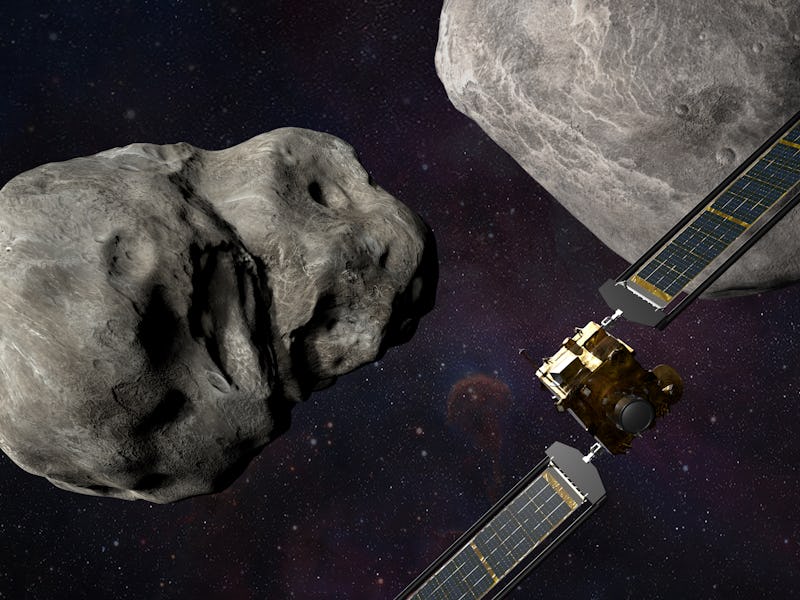NASA's DART spacecraft successfully crashed itself into an asteroid
This is the space agency’s first major step to keeping us safe from killer asteroids.

NASA’s DART mission smacked into an asteroid on Monday, for science.
The experiment — which wrapped up on Monday night shortly after 7 pm EST with the total obliteration of the spacecraft — will yield results that could help humans ward off dangerous colliders from space in the future. The Solar System is littered with rocks, many of which burn up before striking Earth’s surface. But behemoths can overcome our atmosphere’s erosive nature and smack into our planet with, at times, drastic consequences.
DART, or Double Asteroid Redirection Test, targeted a small moon of a larger asteroid. It’s NASA’s first flight mission for planetary defense. It’s still too early to tell the exact details of the encounter, which happened 6.8 million miles away, and how significantly the crash shifted the course of the asteroid. In the coming days and weeks, NASA will have a better idea of what the crash did to the 525-foot-wide asteroid named Dimorphos. This space rock is the smaller member of a binary system; it’s a moonlet of the much larger asteroid Didymos.
DART is (now was) a box-shaped spacecraft (3.9 × 4.3 × 4.3 feet) with two large solar-array wings. Its total mass was roughly 1,260 pounds at impact. As a demonstration mission, DART doesn’t have a rich suite of instruments — just a basic camera and a couple of CubeSats to give a helping hand in documenting the crash.
First, there was the DRACO camera, or Didymos Reconnaissance and Asteroid Camera for Optical navigation, onboard DART. Although it pulverized upon impact, it streamed the kinetic impact back to Earth in real time. Later, scientists will use the high-resolution close-up images of Dimorphos’ surface to understand what effect DART had on the rock.
But the small satellite LICIACube caught the event, too, from afar. Short for Light Italian CubeSat for Imaging of Asteroids, the project from the Italian Space Agency used its two instruments to document the collision. They boast two Star Wars-inspired names, LEIA and LUKE. NASA’s Hubble, the James Webb Space Telescope, and Lucy missions will also try to sneak a peek at the impact.
In two years, the European Space Agency will launch Hera toward Didymos and Dimorphos. Hera and two CubeSat stowaways will perch a safe distance from the asteroids and monitor their orbit and surface features, which will help planetary scientists triage the effects of the DART missions. The combined datasets will provide better information for future asteroid deflection missions — including some that could be hazardous.
DART’s kinetic demonstration cannot be used on all asteroids. Some, like Bennu, are likely a clump of individual rocks. They may not respond as Dimorphos did to getting smacked. But, DART is an ambitious and captivating start to planetary defense.
This article was originally published on